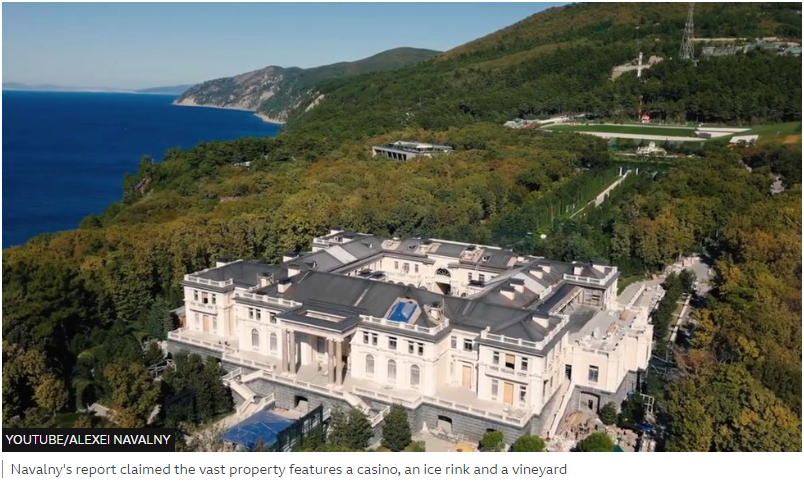In The Critic, Peter Caddick-Adams makes a case for Vladimir Putin being all of Ian Fleming’s fictional 007 adversaries brought to life in a single person:
I am certain Vladimir Putin has a giant coloured globe, or maybe a huge map set in a wall, which at the tap of a button, silently slides in and out of view. In his mind, he will no doubt have experimented with his artist’s palette, of coating many of his geographical neighbours with his favourite shade of bright, bloody crimson.
Talking of sliding panels operated by secret switches, I would be surprised if the Russian leader has not watched all the James Bond movies, if only out of professional interest. He would see, if so, that he is every one of Ian Fleming’s villainous creations — Ernst Stavro Blofeld, Le Chiffre, Sir Hugo Drax, Auric Goldfinger, Emilio Largo, Dr Julius No and Francisco Scaramanga — all rolled into one person.
Presiding over the robber state that is the Russian Federation, Putin is at once militarily and politically all-powerful, but also the master international criminal. At a 2017 US Senate Judiciary Hearing, the Putin arch-critic and American financier, Bill Browder, estimated the Russian had “accumulated $200 billion of ill-gotten gains”, describing him as “one of the richest men in the world, if not the richest”.
It was the Second World War espionage boss, Commander Ian Fleming, who brought not only his world famous spy to life, but also the lairs of James Bond’s opponents. Fleming had inspected many of the Nazi underground factories and subterranean rocket bases immediately after the defeat of the Fatherland in 1945. In print, they appeared as his villains’ secret headquarters.
Fleming’s novels were in turn translated into celluloid by the talent of set designer Ken Adam. He worked on seven Bond movies, beginning with Dr No in 1962, via You Only Live Twice, and Diamonds Are Forever, and devised the circular War Room in Stanley Kubrick’s Dr Strangelove of 1964. If you don’t remember the scene, you’ll recall its most poignant line: “Please, gentlemen, you can’t fight in here. This is the War Room.”
Adam was also working with inside knowledge, for he was born in Berlin, to Jewish parents, who fled to Britain in 1934. On the outbreak of war, Adam enlisted into a British army engineering unit composed of Axis nationals, designing bomb shelters. He later joined the Royal Air Force as a fighter pilot, where he was known as “Heiney the Tank Buster”. After VE-Day, Adam toured the concrete structures and German bases he had attacked. “I flew fighters in the war, made some great movies and was Knighted by the Queen [in 2003]. Not bad for a Jewish lad from Berlin,” he told me in an interview.
In a bizarre case of real life imitating fiction, it was Alexei Navalny, now rotting in Russia’s harshest penal colony for his exposé, who discovered Putin’s covert lair. Sprawling on the Black Sea coast, it might have been designed by Ken Adam. The Russian leader’s $1.9 billion palace comes with a below-ground grand salon, hollowed-out of the cliff-face, lit by a gigantic panoramic window, that, at the touch of another button, can be retracted to let in the sea breezes. Access to the beach or the rest of the complex is by tunnels carved into the rock.
Its existence is naturally denied by the Kremlin, but the site, at Cape Idokopas, near the village of Praskoveevka, is equipped with two helipads, and reputedly 39 times the size of Monaco. I make the basic assumption that scores of designer-stubbled security muscle, dressed in black, toting sub-machine-guns, with a shoot-on-sight brief, will be prowling about.




